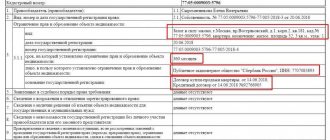Mortgage is a long-term type of lending with an average stated term of 15 years. Over such a significant period of time, the borrower’s financial situation, family size, location and distance of work, etc. may change.
As a result, it may be necessary to exchange the mortgaged apartment for a larger one located in another area or city. Encumbrances do not mean a prohibition on the exercise of property rights.
What do banks offer?
Typically, lending organizations give three options if you want to pay off your mortgage quickly and sell your home .
- Repay the loan in full. It is clear that not everyone is able to shell out a large amount of money at once.
- Transfer the debt to a third party. This approach is fraught with difficulties: firstly, it is necessary to find such a third party, and secondly, the banks themselves are often against it, because such a development worsens the quality of the loan to the Central Bank.
- Replacement of collateral. Equal to apartment exchange. We'll talk more about this option.
How to replace the deposit?
Replacement of collateral is carried out for various reasons. Someone wants to register real estate as their own. Others change the collateral property due to emergency events (fire, flood, collapse of building structures, etc.) that led to destruction or damage to the apartment. To carry out transactions with pledged property, permission from the bank is required. If the credit institution approves the application, the client should proceed as follows:
- Obtain written consent from other owners of the premises (if any);
- Assess the new collateral;
- Take out an insurance policy for collateralized property;
- Enter into a new mortgage agreement.
All actions regarding the change of collateral must be agreed upon with the bank (in accordance with Article 345 of the Civil Code of the Russian Federation). The new collateral must match the old one in value. There are significant financial costs associated with porting a mortgage loan. The client will have to pay notaries, insurers and appraisers. Renewing the loan agreement will require payment of a commission in favor of the financial institution.
Is it possible to exchange mortgaged housing for another?
Yes, you can exchange mortgaged real estate, but subject to certain conditions.
What do you need to know?
Banks dictate conditions under which you can exchange housing only for a real apartment . This point is worth keeping in mind for families hoping to move into a home under construction. The lender must evaluate the new loan facility.
Please note: the borrower pays for the appraisal.
When exchanging housing, you must provide a package of documents identical to those required for a mortgage agreement. The list is quite extensive, here are just some of the most important:
- application form for obtaining a loan;
- passport;
- a copy of the work book;
- SNILS, documents for housing;
- marriage certificate or divorce certificate;
- children's birth certificates.
The list may expand or narrow depending on the requirements of the lending organization.
Additionally, banks require an application to increase the size of the mortgage by an amount equal to the difference between the old and new home (if any). Often, the borrower is required to pay a down payment on a new home.
Options
The simple option is not even a classic exchange as such. First, you need to sell the mortgaged apartment and use the proceeds to buy a new home. We will talk about it at the end of the article.
A complex option involves the simultaneous conclusion of two sales and purchase agreements between the bank and the borrower and between the borrower and the real estate seller. In this case, pay attention to the following things:
- take official confirmation from the bank that it does not object to the exchange of the apartment;
- the apartment that the borrower sells will legally still be pledged to the bank;
- after registering the borrower’s ownership of the new property, it becomes collateral to the credit institution;
- the bank agrees to remove the encumbrance from the sold apartment, and the new owner gets the opportunity to undergo state registration of ownership.
How to obtain the bank's consent?
Since the property is pledged to a credit institution, you need to obtain its consent . This is stated in Article 37 of Federal Law No. 102-FZ “On Mortgage”. For everything to happen without delay, a significant part of the mortgage loan must already be repaid without delay. As a rule, 4-5 years of regular payments are sufficient.
An advantage will be the cost of new real estate, which should be less than or equal to the mortgaged property, and the high liquidity of the purchased housing.
Then the borrower must submit a written request to the bank, indicating that he needs permission to exchange mortgage housing. A package of documents is attached to the application:
- passport (original and copy);
- passport and written consent of the co-borrower (if available);
- marriage certificate (if available), spouse’s consent to the exchange;
- copy of personal account;
- extract from the house register;
- documents confirming the timeliness of payments.
How to exchange for a home?
The procedure for exchanging real estate is established by Chapter 31 of the Civil Code of Russia. When exchanging an apartment for a house, it is proposed to either find an equivalent property, or an unequal one with a subsequent surcharge. The cost of housing is determined by an appraisal , which is paid by the borrower.
The purchase and sale agreement will indicate not only information about the house, but also the characteristics of the land plot. It is also necessary to indicate the land plot in the transfer and acceptance certificate.
Important: All accompanying documents must be clean, and the land plot should preferably have no encumbrances.
If they exist, they are specified in the contract.
Who can become a new borrower
We list the options for re-registration of a mortgage.
- To relatives. A simple solution, especially if you are referring to immediate family members. A husband and wife can share mortgage obligations among themselves as co-borrowers or buy out and transfer part of the property to themselves after a divorce. With mutual agreement, one spouse can repay the loan, and the other can receive the apartment.
- For children. The law allows you to re-register an apartment with a mortgage for a minor child using a deed of gift. Obligations under the agreement are transferred to the parent or guardian who has assumed the load on the loan. The bank also makes accommodations if borrowers of retirement age want to re-issue a mortgage for adult children. The credit institution provides the opportunity to pay 50% of the remaining loan, including through a consumer loan and drawing up a deed of gift.
- To a third party. The new borrower is given a mortgage, according to which he has the right to living space. In this case, you can transfer the mortgage to another person completely. Banks agree to such a transaction reluctantly and under certain circumstances: the borrower has become disabled, changed his place of residence, or filed for divorce. Also, loan real estate is sometimes sold as an inheritance along with the loan.
Features of the procedure
Procedure steps:
- Obtaining permission from the bank. We discussed this in detail above.
- Finding a buyer and agreeing on the terms of the transaction.
- Deal.
What documents to collect and what to pay attention to?
Equal property
This is the simplest option. To check the safety of the apartment, you need to order extracts from the housing department, USRN, and house management. They are paid by the borrower.
If all documents are in order, the parties begin to conclude an agreement , simultaneously drawing up an exchange agreement, transfer of a new pledge and removal of the encumbrance from the old apartment.
More expensive and larger area
If the bank immediately agrees to a transaction with an additional payment, then the sequence of actions is identical to the exchange for equivalent housing. If the lender refuses, citizens try to sell their mortgaged home while simultaneously applying for a new loan.
Bank approval often follows a simplified procedure: for this it is important to have a clean credit history and good quality new collateral that suits the lender.
When the borrower receives consent for both applications, he draws up two contracts: for the sale of the old one and the purchase of the new one. In this case, the procedure for registering a deposit for new housing is carried out first . The old apartment is still under an encumbrance, which is removed after concluding a new loan agreement.
A private house
In addition to the documents for the house, which are identical to the documents for the apartment, which we discussed above, you will need special papers for the land plot:
- documents confirming ownership of it;
- an extract from the Unified State Register of Real Estate (until 2021, its function was performed by a cadastral passport for land);
- information from the cadastral authority that the plot is not subject to encumbrance.
Conclusion of an agreement
The purchase and sale agreement for the exchange of mortgage housing is drawn up in simple written form. It must contain the following points:
- subject (what kind of living space);
- price and payment procedure (immediately or in parts);
- list of persons registered in the apartment.
If desired, the parties include in the documents the period when the apartment will be empty and transferred , the seller’s obligation to pay for utilities until the date of eviction, etc.
Sometimes the parties enter into an advance agreement if irrefutable proof of payment is required. It would be useful to indicate in the contract that the advance must be returned to the buyer if circumstances are discovered that impede the transaction. Otherwise, the buyer risks losing both money and new housing.
Instead of an advance agreement, it is possible to use a preliminary agreement, which will indicate the firm intentions of the parties.
Registration of a transaction
At the time of the transaction, the buyer must have an amount sufficient to cover the mortgage , which is divided into two parts. The first, equal to the balance of the loan, is sent for full early repayment of the loan. The second is placed in a safe deposit box with certain access conditions. This money is intended for the seller of the new home; it will be transferred after registration.
Important: the buyer will have to obtain a loan from the same bank as the seller’s loan. Exceptions are rare and extremely difficult to document.
After concluding the transaction, it is necessary to submit the entire package of documents from the bank to Rosreestr , where the buyer will be registered as the new owner. This is necessary to remove the burden. After completing this procedure, the buyer receives the housing and the rights to it, and the seller receives the difference between the price of the apartment and the mortgage amount that was pledged to the unit.
In the future, all that remains is to sign the acceptance certificates and celebrate the housewarming.
Is it possible to exchange a mortgage on an apartment?
Not every borrower knows whether it is possible to exchange a mortgaged apartment for another. The answer depends on the bank that issued the loan.
Article 345 of the Civil Code of the Russian Federation provides for the possibility of changing the pledge. However, when exchanging encumbered real estate, the bank faces additional costs associated with re-registration of documents and does not receive any financial benefit.
Therefore, banks are reluctant to meet clients halfway and require them to comply with the stated requirements:
- conscientious, timely payment of debt;
- at least two years must pass after the conclusion of the mortgage loan agreement;
- a significant part of the debt has been paid;
- the new property is located in an area served by the bank that issued the mortgage.
Banks announce additional conditions for approval of the transaction. These conditions are developed by the lender independently. The bank will require an independent assessment of the purchased property with the borrower's funds, additional certificates confirming the proper condition of the purchased apartment.
Method one
Loan without refusal Loan with arrearsUrgently with your passportLoans at 0%Work in Yandex.TaxiYandex.Food courier up to 3,400 rubles/day!
Find the right apartment or house that meets all the bank’s requirements for collateral. At the same time, it is better to do all operations through a trusted bank or companies cooperating with the bank. Write an application for a new loan, possibly with an increase in the amount.
- If the institution gives the go-ahead, the current collateral can be put up for sale. On the day the mortgage is renegotiated, 2 transactions are carried out simultaneously. First, the old property is sold, technically the loan is repaid. After this, the bank client is issued a new mortgage.
- Additional lending options are possible, when a person is given a new limit to the current one. That is, if there is an outstanding loan in the amount of 500 thousand rubles, the bank issues an additional 500 - 700 thousand rubles. and more, i.e. what the credit committee decides.
- After this, a new schedule is drawn up and an additional agreement to the existing loan is signed. This is a great option for the client, but the bank may have its own intentions in this regard.
Advantages and disadvantages of exchanging an apartment with a mortgage
The main advantage of exchanging a mortgaged apartment is the opportunity to change housing that is in a state of encumbrance to a more suitable option. This means that once a person has taken out a loan for real estate, he will not be subject to strict restrictions. He has the opportunity to improve his living conditions, move from one city to another, change his address, buy a larger or smaller apartment at his discretion.
Other advantages of exchanging housing with a mortgage is the possibility of castling both equal real estate objects and those with a difference in value. If you need to change your apartment to one of a similar size and price, then most likely there will be no problems with the bank. He will agree to carry out the transaction.
But there are other exchange options. New living space may be more expensive than the previous one, or vice versa – its cost is lower. In this case, the banking institution may refuse to carry out the exchange to clients. The main disadvantage of this procedure is that the lender is not obliged to accommodate his borrower. Obtaining bank permission can be problematic.
However, a transaction to exchange a mortgaged apartment can be completed with the involvement of another bank. If the price of the apartment being purchased is higher than the mortgage, then it is advisable to spend the money from the sale of the latter to the client to pay off the loan debt. The remaining amount will allow you to make a down payment on your new mortgage.
Sometimes the buyer does not have enough funds to purchase a mortgaged apartment. This creates additional problems for real estate exchanges. Then it is advisable to change the debtor under the contract. But the bank may refuse such a deal if the new borrower does not meet its requirements.
Deal nuances
When clients contact the branch with a request to change the property in the mortgage agreement, banks check that a number of conditions are met:
- repayment of at least half of the mortgage amount;
- new property is cheaper than the previous one;
- the client always deposited money into the cash register on time for a long time.
An attempt to renew the contract is also complicated by the documentary support of the operation. In fact, everything will look like a new loan, where old appraisal costs, mandatory payments in the process of purchasing real estate, notary expenses, and so on will find their place. Perhaps the bank will want to receive a reward for this.
All costs are borne by the borrower. The moment of increasing the cost of the loan is separately stipulated when the price per square meter is higher than under the previous agreement. In any case, you should not start the procedure without the consent of the creditor.
Legal requirements for the procedure
The relationship between the bank and the borrower is regulated on the basis of a loan agreement , which is drawn up in accordance with the Laws of the Russian Federation.
According to Federal Law No. 102 (Article 6), each mortgage loan is based on collateral, which is the purchased property.
The exchange procedure involves replacing the collateral, that is, actually re-issuing a loan for another object .
The general procedure for such a replacement is regulated by Article 345 of the Civil Code of the Russian Federation. Based on this law, each bank issues its own document, which contains specific steps for carrying out this procedure.
You can learn about how to exchange an apartment with an additional payment, how to exchange old housing for a new building, as well as about non-resident housing exchange from our articles.









